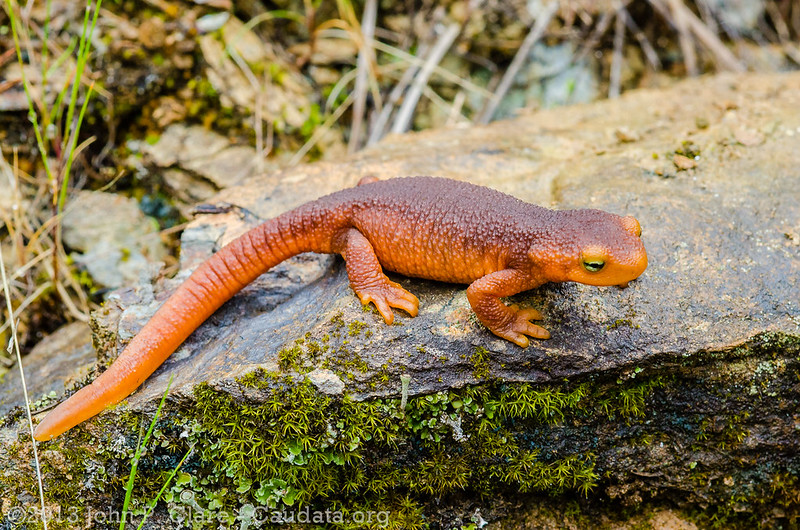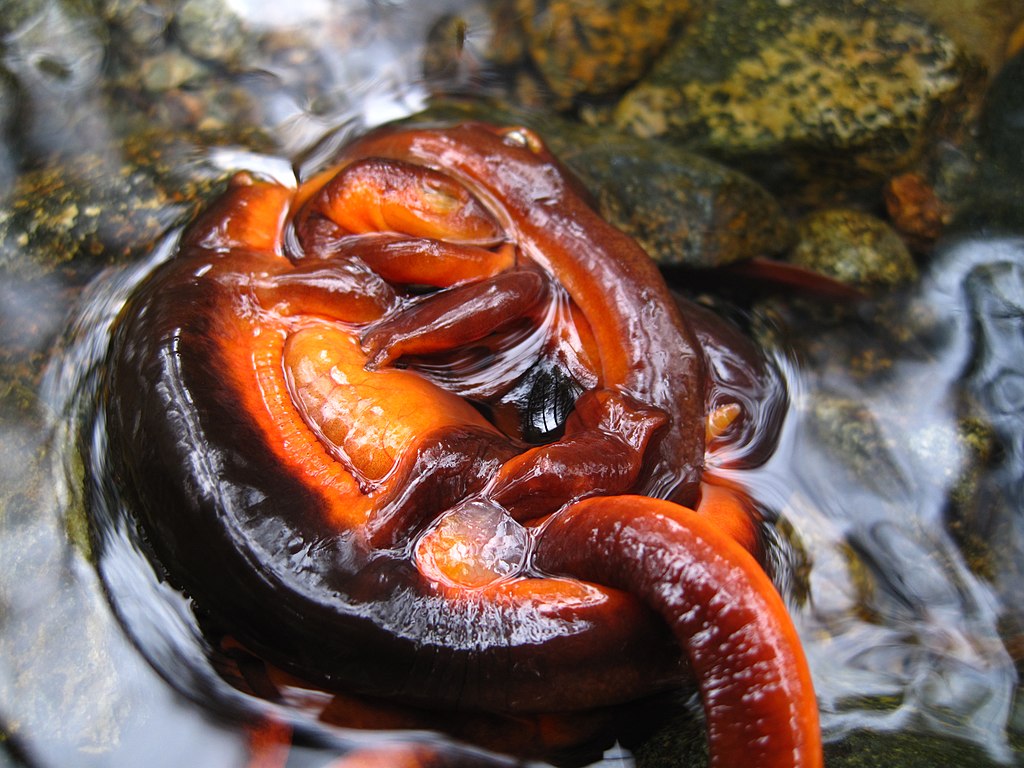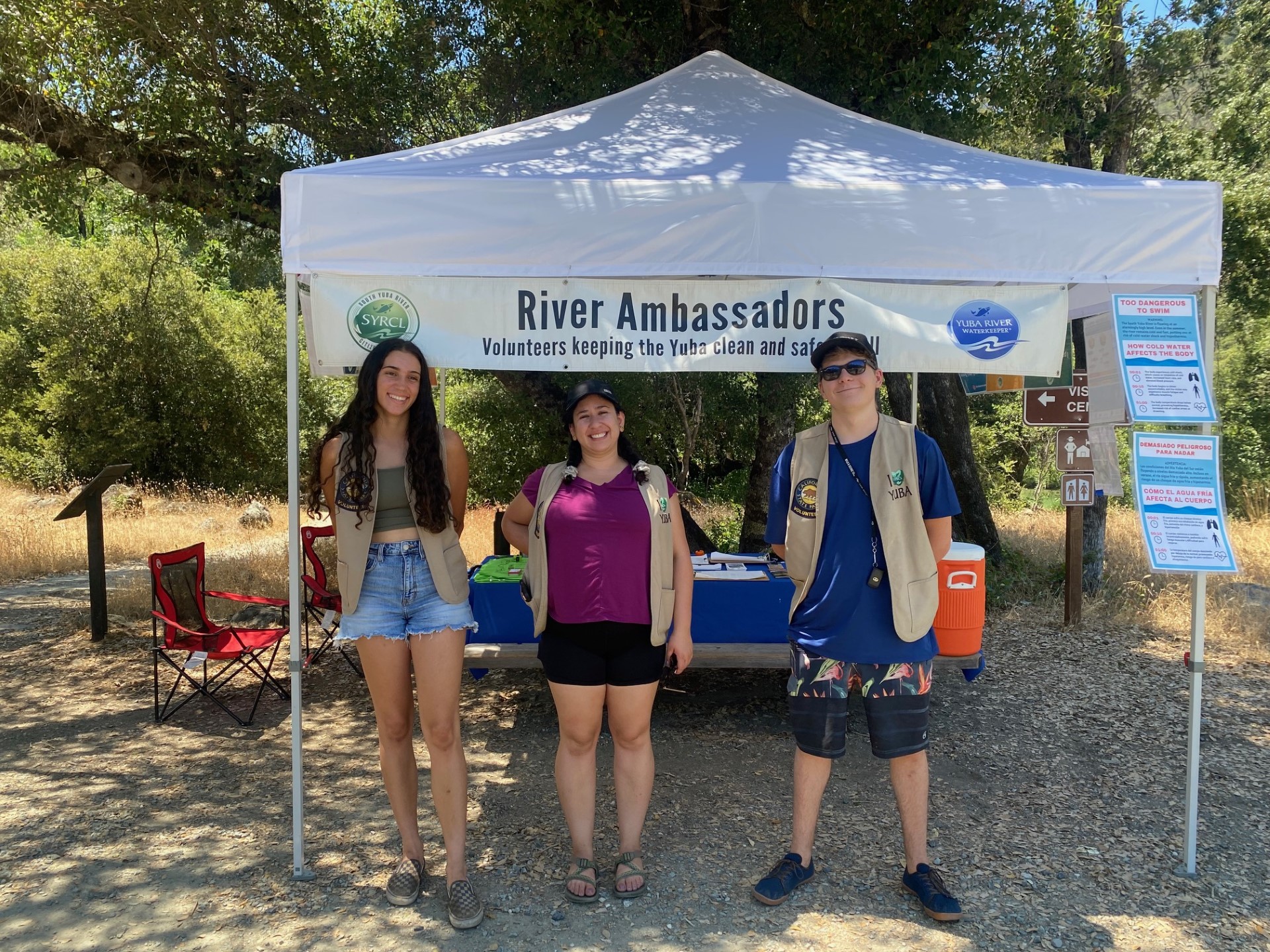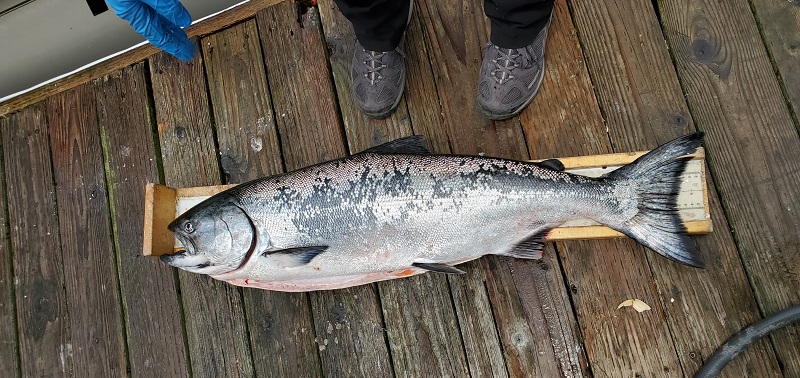How to Safely Spot the Sierra Newt
By Shannon Hedge, Education & Outreach Coordinator

Sierra newts are endemic to the western slope of the Sierra Nevada Mountains of California, which means their habitat is restricted to this area. They inhabit grey pine-blue oak or ponderosa pine communities outside of breeding season. Sierra Newts are aquatic breeders and have shown a strong preference for using streams for breeding. These animals spend about six months of their early lives in water, first as eggs and then as larvae. When in their aquatic life stage, Sierra Newts require good vegetative cover to remain hidden from predators.
While there are currently no significant known threats to Sierra Newts, other species within the same genus are facing population declines due to habitat loss and predation by introduced species such as mosquitofish, bullfrogs, and crayfish. Many experts feel it’s just a matter of time before these threats expand to the Sierra Newt as well.
If you are interested in newts and want to find this colorful creature in its own habitat, now is the time. Sierra Newts begin migrating to breeding streams in January and can be seen near streams and creeks until about May. The best places to look are in or near the pools of creeks and streams.


When you go out, we suggest the following:
Brave the Rain!
Amphibians need to keep their skin moist, so they tend to travel most when it is actively raining. Doing so allows them to traverse the landscape without fear of desiccation.
Hike at Night
Because the hot sun isn’t beating down and causing evaporation, nighttime is the most humid time of day here in California.
Keep your Eyes on the Ground
The amphibians of the Yuba are all ground dwellers, so squat down and get on their level. Keep your eyes peeled for a flash of orange with big yellow eyes staring back at you.
<.> <.>
Avoid Touching or Disturbing the Sierra Newt
Sierra Newts are the most toxic amphibian in the Yuba River Watershed. They secrete a powerful neurotoxin called tetrodotoxin which can enter the body through ingestion or contact with open wounds. They are distinguished from other salamanders by having a dark coloration on the top side of their body and bright coloration on their underside.
Try out these locations:
Buttermilk Bend Trail
This trail is a gentle one that follows the South Yuba River. It is most well-known for its showy wildflower displays in the spring, but newts hang out there as well. The trail crosses over a tributary to the river, French Corral Creek, where Sierra Newts have been spotted. As you get close to the crossing, keep an eye out along the trail for newts on the move or in pools in the creek where the newts gather for breeding. Make sure not to disturb them while they are looking for mates!
Hardrock Trail
Hardrock Trail is housed within Empire Mine State Park. This 1.6 mile trail is relatively flat and meanders around the historic mining area. The southern end of the trail crosses a spillway of Little Wolf Creek, which is your best bet for viewing newts in the park.
South Yuba Trail
While not all of this trail is great for newt viewing, sightings of Sierra Newts have been reported at the various tributaries that feed into the Yuba River. We suggest starting your hike from the South Yuba Campground and heading about a mile in towards the river. During this segment, you will cross over a creek where newts have been found.

Important
While most people know Independence Trail as a newt hotspot, the trail remains closed due to damage from the Jones Bar Fire and is unsafe for hiking.
Did you enjoy this post?
Get new SYRCL articles delivered to your inbox by subscribing to our ENews.



